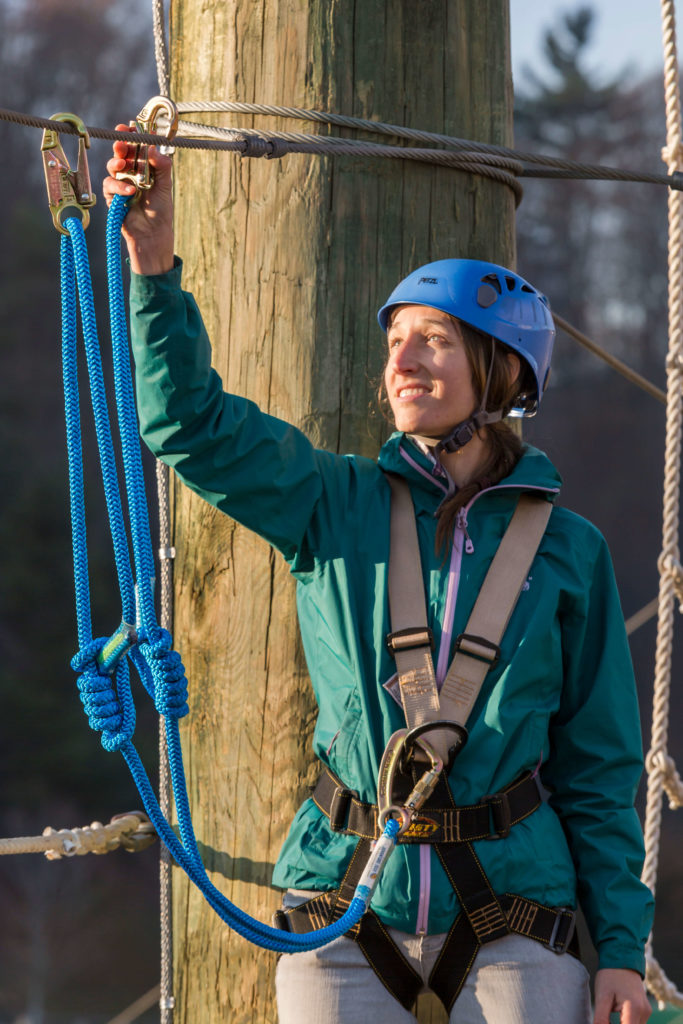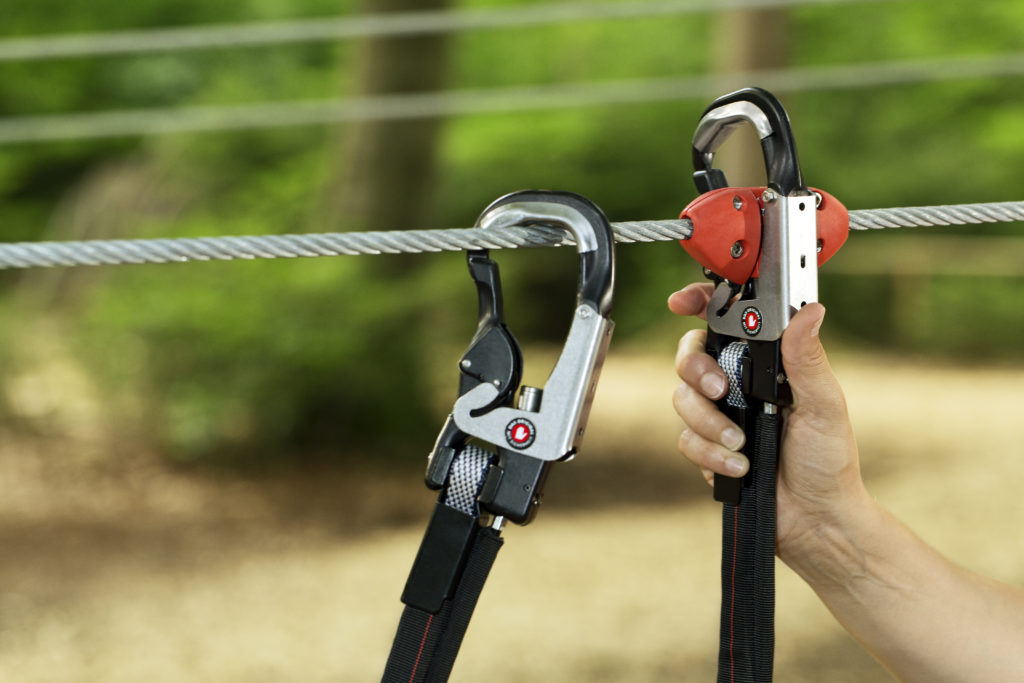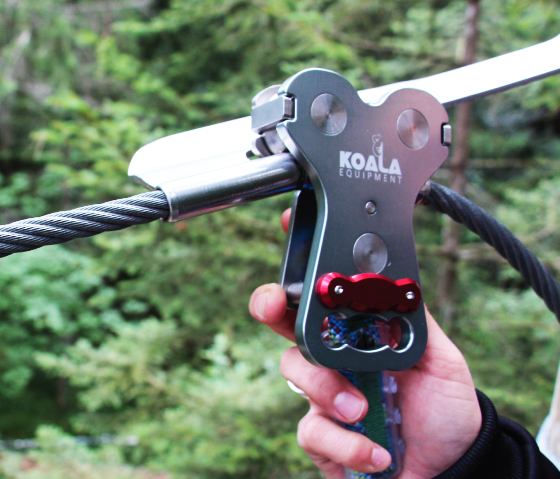Belay is the primary safety system used to protect people while at height. There is a wide range of belay systems on the market and picking the right one is a critical decision that influences operations, efficiencies, risk, and superivsion. While there are many brand names on the market, the most common belay systems used in challenge courses, on climbing towers, in aerial parks, and on zip line and canopy tours fit into one of four categories; dynamic, static, smart, and continuous. Traditional challenge courses and climbing towers common at camps and conference centers often utilize dynamic and static belays while smart and continuous belays are commonly found in commercial facilities. Regardless of your audience, choosing to use dynamic and static belays comes with a higher level of risk with greater requirements for safety management.
The management requirements for dynamic and static belays are ideal when leveraged to support established programs with goals that include skills progression, personal responsibility, and trust. For commercial operators, smart and continuous belays erase the management requirements of traditional systems by reducing the potential for user error that may leave them susceptible to a fall. Regardless of your audience, you will want to decide the system you intend to use early on as this can have a big impact on course design.
 Dynamic Belay– Also referred to as running or top belay, dynamic belays are typically found on climbing walls, vertical ascending elements like a Giant’s Ladder, and simple challenge courses where a cohesive group is responsible for user safety and high-levels of staff input, management, and supervision is possible. Used in conjunction with a climbing rope, common dynamic belays use tube-style devices like the Petzl Verso and Omega Pacific SBG II. A running belay is a variant of the dynamic belay in which the top anchor point is attached to a horizontal cable using a trolley. This allows a ground-based team to maintain the belay anchor point above the climber while traversing a horizontal element or activity.
Dynamic Belay– Also referred to as running or top belay, dynamic belays are typically found on climbing walls, vertical ascending elements like a Giant’s Ladder, and simple challenge courses where a cohesive group is responsible for user safety and high-levels of staff input, management, and supervision is possible. Used in conjunction with a climbing rope, common dynamic belays use tube-style devices like the Petzl Verso and Omega Pacific SBG II. A running belay is a variant of the dynamic belay in which the top anchor point is attached to a horizontal cable using a trolley. This allows a ground-based team to maintain the belay anchor point above the climber while traversing a horizontal element or activity.
- Static Belay– Also referred to as lobster claws, static belays are common in traditional facilities including challenge courses and zip lines used at camps and for team building purposes. Static belays can be found in use at some canopy tours and other commercial facilities where staff are assisting with belay system management. Static belays use a dual-leg lanyard design that allows the user to transition from one safety line to the next while always maintaining one point of connection to the safety line. This offers users freedom of movement and makes it easy to move up, down, over and across varied terrain. EZ Adjust Lanyards by Aerial Adventure Tech update traditional 3-strand lobster claws with sewn rope terminations.

- Smart Belay– A variant of static belays, smart belays add a locking mechanism that permits only one leg of the lanyard from being disconnected from the safety line at a time. This addresses a critical risk with traditional static belays in which a user inadvertently disconnects both lanyards from the safety line while at height. The locking function is specific to the smart belay manufacturer with the most widely used systems working in conjunction with a key affixed to the safety line that simultaneously locks one leg while unlocking the other. Smart belays are commonly used at commercial aerial parks and increasingly by traditional operators of challenge courses and other team building facilities. Users of smart belays benefit from freedom of movement and operators can monitor and supervise users more efficiently with less potential for error. Smart belays require ongoing inspection and maintenance and many require annual factory recertification. Bornack is a pioneer in smart belays and the Bornack SSB is prevalent throughout the US market.

- Continuous Belay– In a class all its own, continuous belay systems use a combination of proprietary brackets to carry the safety line in conjunction with a shuttle, trolley, or hook that can pass over the brackets without coming disconnected from the safety line. Once connected, users stay connected and never have to transfer their safety system from one line to another. Continuous systems can work for a wide audience, require limited orientation time, and promote consistent and efficient movement throughout the course and are a great choice for kids or others with limited fine motor control. Trolley-based systems roll smoothly across the safety line reducing wear and can easily transfer from horizontal elements to zip lines without any additional equipment. Not without limitation, continuous systems don’t work well on sloping obstacles and terrain, and one user cannot pass another. Course design is focused on creating directional trails that users follow from entry to exit. Koala Continuous Belay is a simple, durable, and affordable trolley-based system that includes components that create trail forks, zip lines, and vertical ascending and descending stations.
